There are a few issues.
The first issue is the order of the x values. From the documentation for scipy.interpolate.UnivariateSpline we find
x : (N,) array_like
1-D array of independent input data. MUST BE INCREASING.
Stress added by me. For the data you have given the x is in the reversed order.
To debug this it is useful to use a "normal" spline to make sure everything makes sense.
The second issue, and the one more directly relevant for your issue, relates to the s parameter. What does it do? Again from the documentation we find
s : float or None, optional
Positive smoothing factor used to choose the number of knots. Number
of knots will be increased until the smoothing condition is satisfied:
sum((w[i]*(y[i]-s(x[i])))**2,axis=0) <= s
If None (default), s=len(w) which should be a good value if 1/w[i] is
an estimate of the standard deviation of y[i]. If 0, spline will
interpolate through all data points.
So s determines how close the interpolated curve must come to the data points, in the least squares sense. If we set the value very large then the spline does not need to come near the data points.
As a complete example consider the following
import scipy.interpolate as inter
import numpy as np
import pylab as plt
x = np.array([13, 12, 11, 10, 9, 8, 7, 6, 5, 4, 3, 2, 1])
y = np.array([2.404070, 1.588134, 1.760112, 1.771360, 1.860087,
1.955789, 1.910408, 1.655911, 1.778952, 2.624719,
1.698099, 3.022607, 3.303135])
xx = np.arange(1,13.01,0.1)
s1 = inter.InterpolatedUnivariateSpline (x, y)
s1rev = inter.InterpolatedUnivariateSpline (x[::-1], y[::-1])
# Use a smallish value for s
s2 = inter.UnivariateSpline (x[::-1], y[::-1], s=0.1)
s2crazy = inter.UnivariateSpline (x[::-1], y[::-1], s=5e8)
plt.plot (x, y, 'bo', label='Data')
plt.plot (xx, s1(xx), 'k-', label='Spline, wrong order')
plt.plot (xx, s1rev(xx), 'k--', label='Spline, correct order')
plt.plot (xx, s2(xx), 'r-', label='Spline, fit')
# Uncomment to get the poor fit.
#plt.plot (xx, s2crazy(xx), 'r--', label='Spline, fit, s=5e8')
plt.minorticks_on()
plt.legend()
plt.xlabel('x')
plt.ylabel('y')
plt.show()


